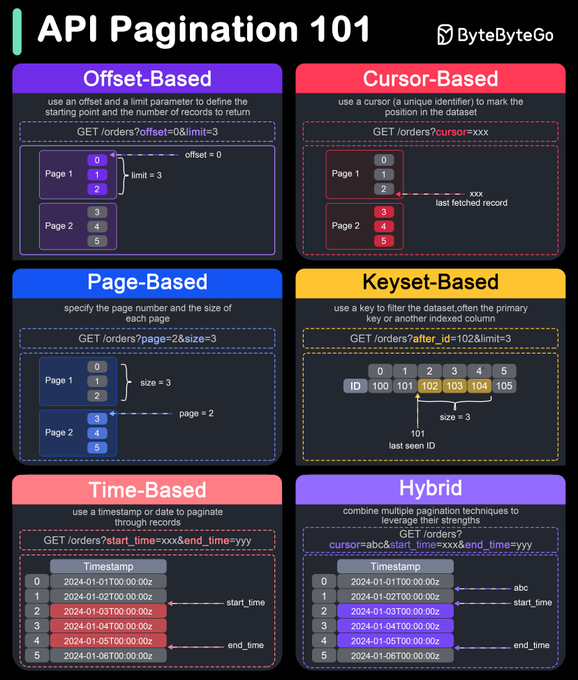API Pagination Basics
Pagination divides large datasets into smaller, more manageable chunks, improving performance and user experience by preventing the loading of large amounts of data at once.
Common Pagination Techniques
Page-Based Pagination
- Simple Implementation
- Allows jumping to specific pages
Steps:
- Set Items per Page: Decide on a fixed or configurable number of items per page.
- Calculate Start Index: For page
N, calculate start index as(N - 1) * page_size. -
Fetch Data: Use
LIMITandOFFSETto retrieve data:SELECT * FROM table LIMIT 10 OFFSET 20;
Cursor-Based Pagination
- Efficient for Large, Dynamic Datasets
- Resilient to Changes (e.g., Deleted Records)
- Ideal for Infinite Scroll
Steps:
- Choose Indexed Column: Select an indexed column to use as the cursor.
- Hash Cursor Value: Securely hash the cursor value.
- Client Request: Client provides the hashed cursor value of the last item they saw.
- Server Filtering: Server filters results based on the cursor and fetches the next page.
- Return New Cursor: Server returns the hashed cursor value of the last item in the current page.
- Client Use: Client uses the new cursor to request the next page.
Best Practices
- Avoid OFFSET: For large datasets,
OFFSETbecomes slower as the offset increases. - Use Indexed Columns for Cursor: Efficiently handle large datasets by using cursors on indexed columns.
Ref: sahnlam - X
